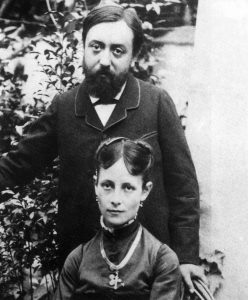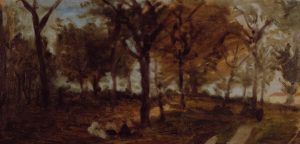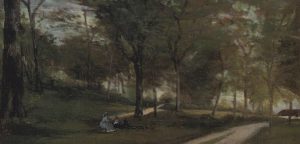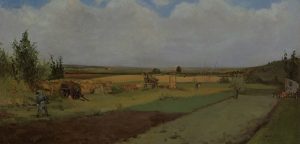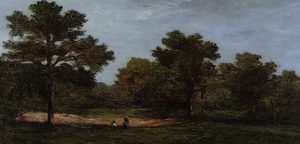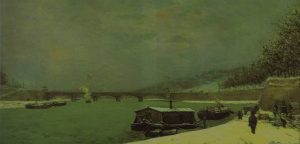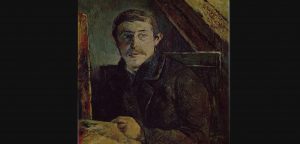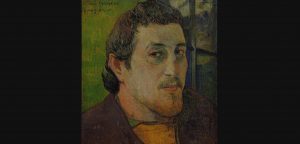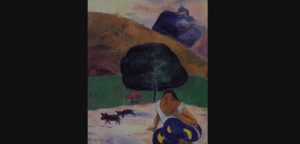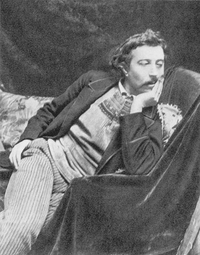Paul Gauguin was born into a remarkable family: his father, Clovis Gauguin, was a convinced radical, a journalist; his mother Alina Maria was from Peru and was born into a very wealthy Creole family.
1848 - 1903
Paul Gauguin
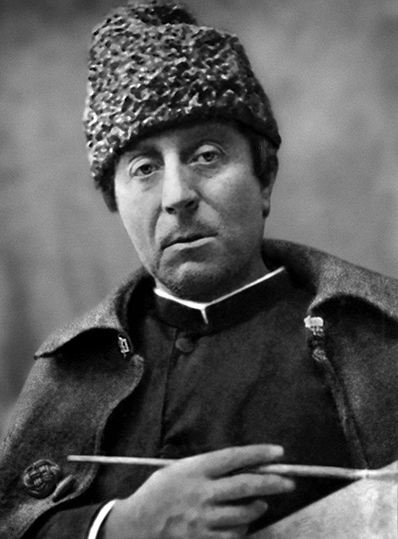
description
The biggest representative of Post-impressionism and partially Symbolism; however, his early works were created in the style of impressionism. He is considered the forerunner and one of the pioneers of the art of modernism (in the broad sense of this term) not only in painting, but also in sculpture and graphics.
Gauguin began painting as an amateur in the 1870s. Soon he actively participated in exhibitions. He became worldly famous only after his demise. And at the end of the 20th century, biographical films about his life were created.
Key ideas:
– P. Gauguin considered it right to refuse from such familiar classical traditions in painting as perspective, chiaroscuro and so on.
– Flat shapes and objects, plants and animals are characterized by a specific smoothness of forms with clearly marked outlines, contours on a monochrome surface. It is about the harmony of the visible and imaginary worlds, when the simplification of the image is allowed in order to achieve semantic accents; there is some decorativeness, often conveyed by unusually shining bright colors.
– Gauguin insisted on the individuality of the views of a particular master on the image, on the freedom of the creative thought and the freedom of the expression of inner emotions.
1848
1849 - 1855
1855 - 1865
1865 - 1873
1873 - 1882
1882 - 1884
1884 - 1888
1888
1891 - 1893
1895 - 1903
The birth of the artist
The family went to Peru, but the father died on the way
Peruvian childhood. Fearing persecution, the family went to Peru, but the father died on the way.
Lived in Orleans
Lived in Orleans, joining the Navy, obsessed with the search for a colorful life.
Worked as a broker at the Paris stock exchange firm
Worked as a broker at the Paris stock exchange firm; married Matt-Sophie Gad, who gave birth to five children in this marriage.
Started painting
Started painting; met Impressionist artists; had his first exhibitions.
Moved to Rouen to save money
Devoted all his time to painting; moved to Rouen to save money.
His marriage fell apart
His marriage fell apart; Gauguin returned to Paris, made summer trips to Brittany and a trip to Panama and Martinique.
Visited Van Gogh in Arles
Visited Van Gogh in Arles, intending to work with him. However, the artists had an argument.
Gauguin moved to Tahiti
Gauguin moved to Tahiti, where he created a series of paintings that became the benchmark for many new art movements.
The death of the artist
After a short stay in France and receiving an inheritance from his uncle, he returned to Tahiti, this time to the Marquesas Islands, where he died after a heart attack on May 8.
Paul Gauguin
On Artist
flow
Impressionism
friends
Vincent van Gogh
Camille Pissarro
artists
Charles Laval
Edgar Degas
Emile Bernard
Giotto
Rafael Santi
Jean-Auguste Dominique Ingres
Eugene Delacroix
Edouard Manet
Paul Cezanne
Alfred Sisley
By Artist
flow
Fauvism
Expressionism
friends
Vincent van Gogh
Camille Pissarro
Stanislav Wyspyansky
artists
Henri Matisse
Pablo Picasso
Auguste Rodin
Mikhail Vrubel
Edvard Munch
Mark Shagal
Robert Delone
Constantin Brancusi
Aristide Mayol
Mikhail Fedorovich Larionov
Viktor Nikandrovich Palmov
Emily Carr
Vladimir Grigorievich Tretchikov
Pekka Halonen

